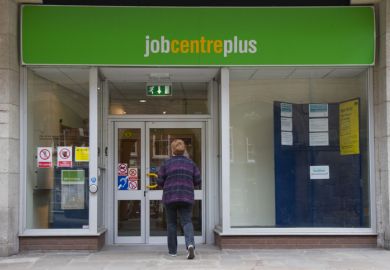Australia devotes a relatively high proportion of its wealth to post-school education, international comparisons suggest. But a rising share of that spending comes from the private purse, and the returns on this investment are “relatively small”.
Some 1.9 per cent of Australia’s gross domestic product is invested in tertiary education, according to newly released figures from the Organisation for Economic Cooperation and Development. This puts it on par with big-spending Norway and ahead of the OECD average of 1.5 per cent.
However, as in the UK and US, the lion’s share of Australia’s spending on tertiary education comes from private sources. Public investment in post-school education constitutes just 0.8 per cent of Australia’s GDP, compared with an OECD average of 0.9 per cent and 1.8 per cent in Norway.
Just 40 per cent of Australia’s tertiary investment is derived from public funding sources, well below the OECD average of 66 per cent.
The figures, mostly derived from 2016 data, are contained in the OECD’s latest Education at a Glance omnibus report. It shows that Australia is highly reliant on students and their families to bankroll its universities and colleges, with household expenditure accounting for 47 per cent of overall tertiary education spending – more than double the OECD average of 23 per cent.
On this measure, Australia is exceeded only by the UK (49 per cent), Colombia (51 per cent), Japan (53 per cent) and Chile (58 per cent).
The report says that Australia has led a global shift in the financing of tertiary education, with the privately funded proportion rising by 7 percentage points between 2010 and 2016, compared to an OECD average of 3 percentage points.
In countries where tuition fees are low or negligible, like Finland, Iceland and Norway, less than 10 per cent of tertiary education spending is sourced through the private sector. “In contrast, more than 60 per cent of funding on tertiary institutions is privately sourced in Australia, Chile, Japan, Korea, the UK and the US, which also tend to charge higher fees,” the report says.
If the funding balance of Australia’s tertiary education is the opposite of Scandinavia’s, the personal payoff is similar. Tertiary-educated Australian workers typically earn 31 per cent more than their peers with no post-school qualifications – ahead of Denmark (28 per cent), Norway (26 per cent) and Sweden (22 per cent), but well behind the OECD average of 57 per cent.
The report says that Australian tertiary degrees deliver a “relatively small” earnings advantage. The private return on investment in tertiary education is about 14 per cent, well below the OECD average of about 19 per cent.
The return on public investment, by contrast, is high by global standards. Government spending on Australian tertiary education delivers a net benefit of 12 cents in the dollar, compared to OECD averages of 9 cents for men and 7 cents for women.
The report says that Australian men net an average lifetime financial return of US$254,300 (£206,900) from their private tertiary education spending, lower than the OECD average of US$295,900. For Australian women, the return of US$229,200 is marginally higher than the OECD average of US$227,600.
“On average across OECD countries, investing in education pays off in the long run for both men and women,” the report notes.
Register to continue
Why register?
- Registration is free and only takes a moment
- Once registered, you can read 3 articles a month
- Sign up for our newsletter
Subscribe
Or subscribe for unlimited access to:
- Unlimited access to news, views, insights & reviews
- Digital editions
- Digital access to THE’s university and college rankings analysis
Already registered or a current subscriber? Login





